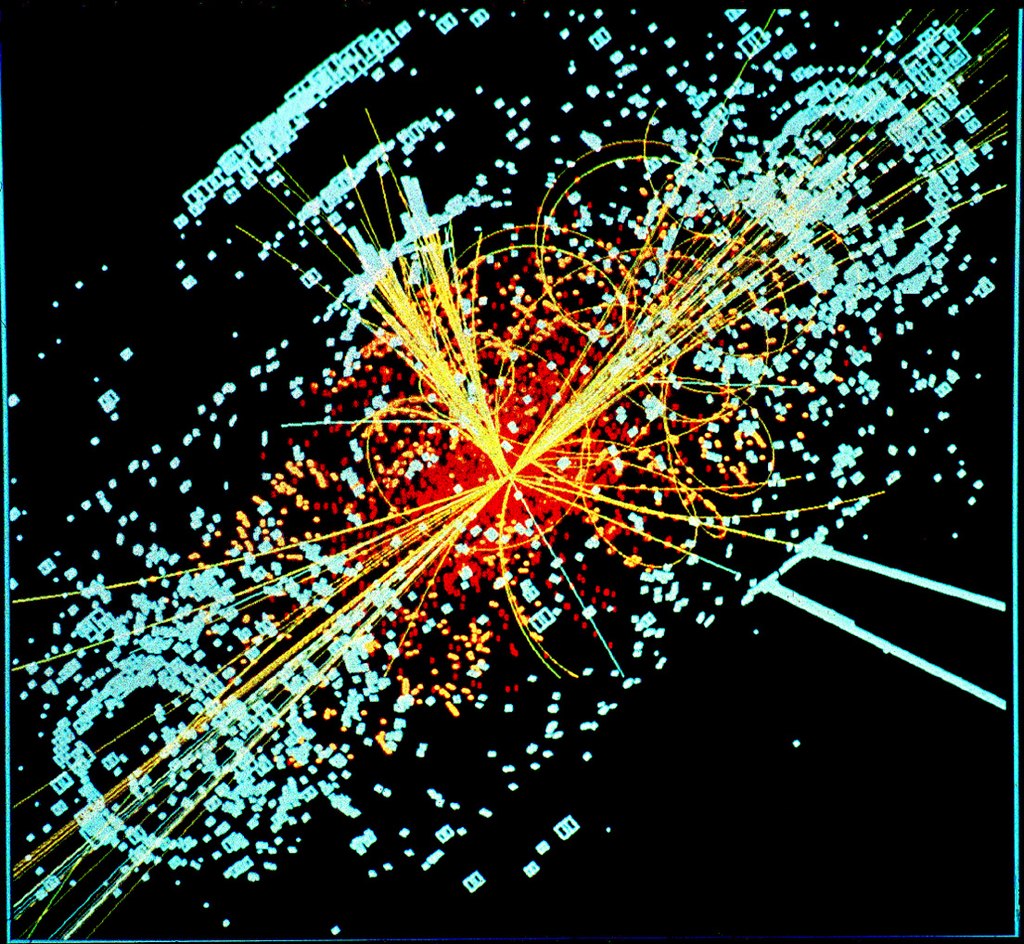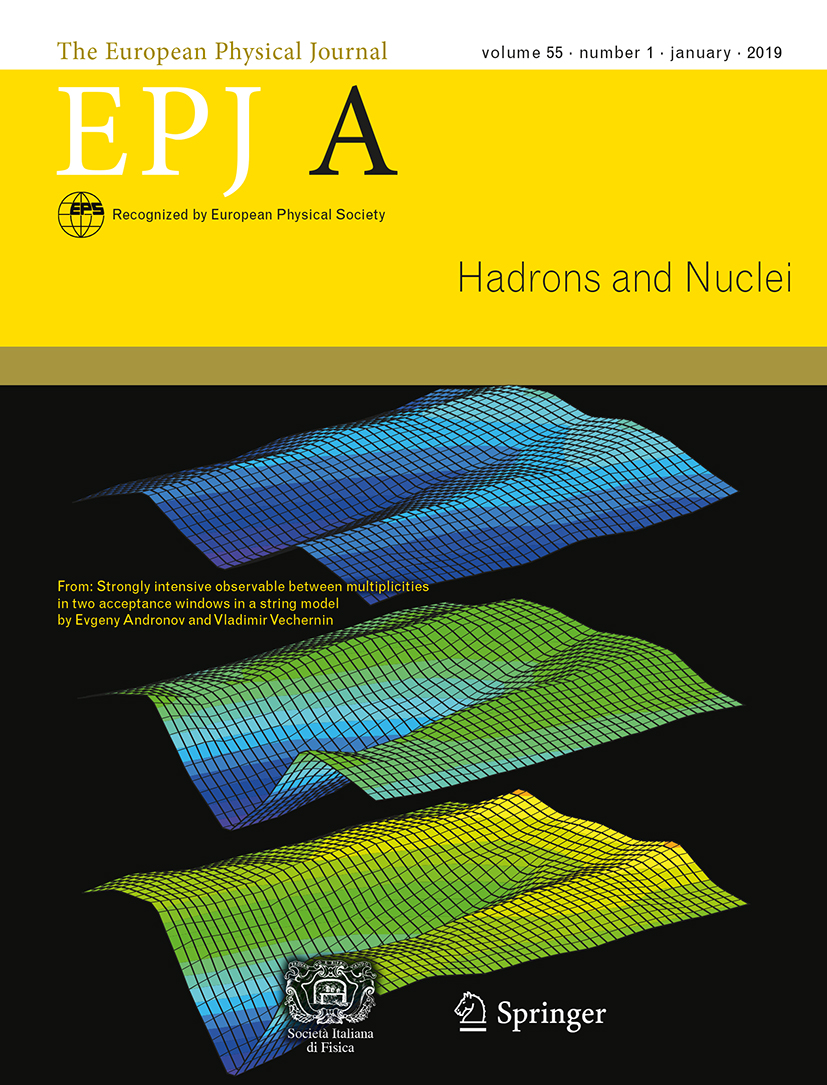News
EPJ A Highlight - A Liquid-Lithium Target for Nuclear Physics
- Details
- Published on 27 March 2019

A liquid-lithium target (LiLiT) bombarded by a 1.5 mA, 1.92 MeV proton beam from the SARAF superconducting linac acts as a ~30 keV quasi-Maxwellian neutron source via the 7Li(p,n) reaction with the highest intensity (5×1010 neutrons/s) available todate. We activate samples relevant to stellar nucleosynthesis by slow neutron capture (s-process). Activation products are detected by α, β or γ spectrometry or by direct atom counting (accelerator mass spectrometry, atom-trap trace analysis). The neutron capture cross sections, corrected for systematic effects using detailed simulations of neutron production and transport, lead to experimental astrophysical Maxwellian averaged cross sections (MACS). A parallel effort to develop a LiLiT-based neutron source for cancer therapy is ongoing, taking advantage of the neutron spectrum suitability for Boron Neutron Capture Therapy (BNCT) and the high neutron yield available.
Michael Paul et al. (2019), Reactions along the astrophysical s-process path and prospects for neutron radiotherapy with the Liquid-Lithium Target (LiLiT) at the Soreq Applied Research Accelerator Facility (SARAF), Eur. Phys. J. A 55: 44, DOI 10.1140/epja/i2019-12723-5
EPJ B Highlight - Understanding stock market returns: which models fits best?
- Details
- Published on 27 March 2019

A comparison of two models for stock market prediction shows clear differences in their accuracy, depending on the length of the forecasting period
Understanding stock market returns hinges on understanding their volatility. Two simple but competing models have been dominant for decades: the Heston model, introduced in 1993, and the multiplicative model, which dates back to 1990. American physicists recently compared the two models by applying them to the United States stock market and using historical data from two indexes: the S&P500 and Dow Jones Industrial Average. In a study published in EPJ B, Rostislav Serota and colleagues from the University of Cincinnati, OH, USA, demonstrate the clear differences between the two models. Simply put, the Heston model is better for predicting long-time accumulations of stock returns, while the multiplicative model is better suited to predicting daily or several-day returns.
EPJ Plus Highlight - Turbulence theory closer to high-energy physics than previously thought
- Details
- Published on 26 March 2019

A new research paper finds the high-energy physics concept of 'un-naturalness' may be applicable to the study of turbulence or that of strongly correlated systems of elementary particles
Many scientists have been disappointed that no new elementary particles have been discovered at CERN's Large Hadron Collider in the wake of the Higgs boson discovery in 2012. The no-show of elusive particles that had previously been predicted by theory is only one example of a 'hole' that has recently appeared in the concept of Naturalness in theoretical physics. In simple terms, the concept states that physical parameters should depend roughly equally on all the terms used to calculate them, in terms of proportion. Sauro Succi, a theoretical physicist at the Fondazione Istituto Italiano di Tecnologia in Rome, Italy, has now published an intriguing essay in the journal EPJ Plus in which he argues that several common natural phenomena do not operate under ‘Naturalness' at all. Rather, they can only be explained using parameters with widely separated numerical values.
EPJ H Highlight - Traveling-wave tubes: The unsung heroes of space exploration
- Details
- Published on 26 March 2019

An invention from the 1950s is still being used today
What do televisions and space exploration have in common? No, we’re not talking about a cheesy physics joke; rather, this is the story of an often-overlooked piece of equipment that deserves a place in the annals of telecommunication history. Some would argue that the traveling-wave tube (TWT) has not received the recognition it deserves when it comes to the history of space travel and communications – until now. A group of researchers based at the Aix-Marseille Université in France has published a review looking into the history of TWTs, recently published in EPJ H.
EPJ B Highlight - Intelligent metamaterials behave like electrostatic chameleons
- Details
- Published on 20 March 2019

Metashells can adapt their wave-bending behaviour based on the characteristics of the material they contain
A chameleon can flexibly change its colour to match its surroundings. And a similar phenomenon can now be seen in a new class of smart materials called metamaterials. The trouble is that these metamaterials lack the ability to respond to nearby objects due to their physical characteristics. To remedy this shortcoming, Chinese physicists have developed so-called 'metashells': hollow shells made of metamaterials and capable of carrying materials in their core. The advantage is that their physical characteristics, such as permittivity - the extent to which a material can store charge within an electrical field - change with the electromagnetic properties of the material they contain. In a recent theoretical study published in EPJ B, Liujun Xu and Jiping Huang from Fudan University in Shanghai, China, describe how they have developed an entire class of these chameleon-like metashells.
EPJ E Topical Review: Gyrotactic phytoplankton in laminar and turbulent flows: A dynamical systems approach
- Details
- Published on 20 March 2019
Biological and geophysical fluids host a sea of microorganisms many of which are motile. An often overlooked aspect of the life of such microorganisms is that the fluids where they are suspended are not still but flowing. In this brief review published in EPJ E, the authors aim to describe some of the interesting phenomena that can emerge due to the modification of the microorganisms' swimming direction by velocity gradients, which affect both the individual motion of microorganisms and their spatial distribution in dilute suspensions.
EPJ Techniques and Instrumentation Highlight - Calibration samples to measure particle identification performance in the LHCb experiment
- Details
- Published on 05 March 2019

Deep underground in the Large Hadron Collider at CERN, beams of protons travel around in circles at almost the speed of light before they are collided head-on. These high-energy collisions produce large numbers of tiny, short-lived particles that quickly decay into lighter, more stable particles. Investigating these particle decays allows physicists to catch a glimpse of the early history of the universe. In new work published in EPJ Techniques and Instrumentation, Marianna Fontana and Donal Hill describe the method to create calibration samples that help determine the accuracy of the detector in the Large Hadron Collider beauty experiment in identifying different particles.
Read the guest post by Donal Hill & Marianna Fontana, originally published in the SpringerOpen blog.
EPJ A Highlight - Shape stability of pasta phases: Lasagna case
- Details
- Published on 01 March 2019

Exotic non-spherical shapes of nuclear matter, so called pasta phases, are possible because of the competition between the short-ranged nuclear attraction and the long-ranged Coulomb repulsion, leading to the phenomenon of Coulomb frustration, well known in statistical mechanics. Such complex phases are expected in the inner crust of neutron stars, as well as in core-collapse supernova cores.
The authors of the EPJ A (2018) 54:215 paper examine for the first time the stability of the «lasagna» phase, consisting of periodically placed slabs, by means of exact geometrical methods. Calculations are done in the framework of the compressible liquid drop model but obtained results are universal and do not depend on model parameters like surface tension and charge density. The stability analysis is done with respect to the different types of deformations corresponding to the eigenvalues of the deformation matrix.
EPJ Data Science Highlight - Using deep learning to “see” inside homes across the world
- Details
- Published on 18 February 2019

How much does someone's living room tell about how they live? Peeking into another person's life might be just part of natural human curiosity, but the answer to this question may provide insights in a wide range of aspects of human behavior. A new study published in EPJ Data Science uses the power of machine learning to explore patterns of home decors—and what they could tell about their owners—in popular accommodation website Airbnb.
See guest post by Clio Andris and Xi Liu originally published in the SpringerOpen blog
EPJE Topical Review: how capillarity drives the movement of small objects
- Details
- Published on 06 February 2019
Moving around small objects using capillary forces is a phenomenon that has stimulated scientists trying to understand the fundamental mechanisms at play. It is also important for many industrial, technological and analytical processes, for example micro-fluidics, oil and gas displacement, mineral flotation, miniature robot and biomechanics. In this EPJ E topical review article Jianlin Liu and Shanpeng Li present a critical review of capillarity-driven migration in which many examples are presented and explained. The small objects in question are non-deformable objects, such as particles, rods, disks and metal sheets as well as soft objects, such as droplets and bubbles. The authors clarify some misunderstandings on the conventional views on these systems.




